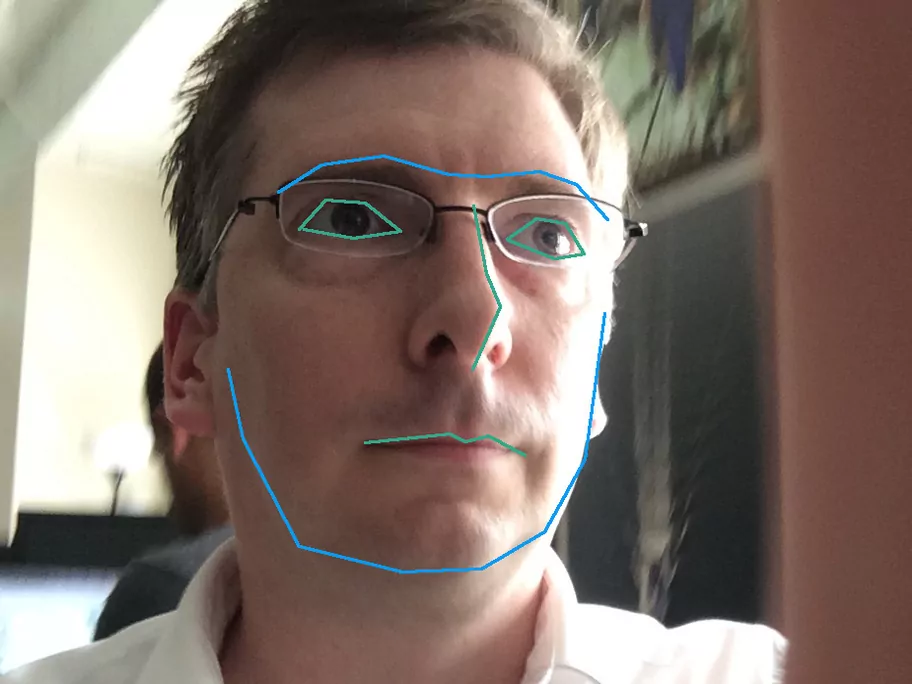With a pair of National Geographic covers to his name, not to mention having been named Outstanding Nature Photographer of the Year, Daniel J. Cox knows a thing or two about photography equipment. And software. And backups. In a previous story, Cox discussed what he likes about Mylio Photos: namely, that it doesn’t rely on an internet connection or the cloud and its automatic syncing, speed, and organizational capabilities. Here, the longtime Mylio Photos user shares how he uses a few other favorite features.
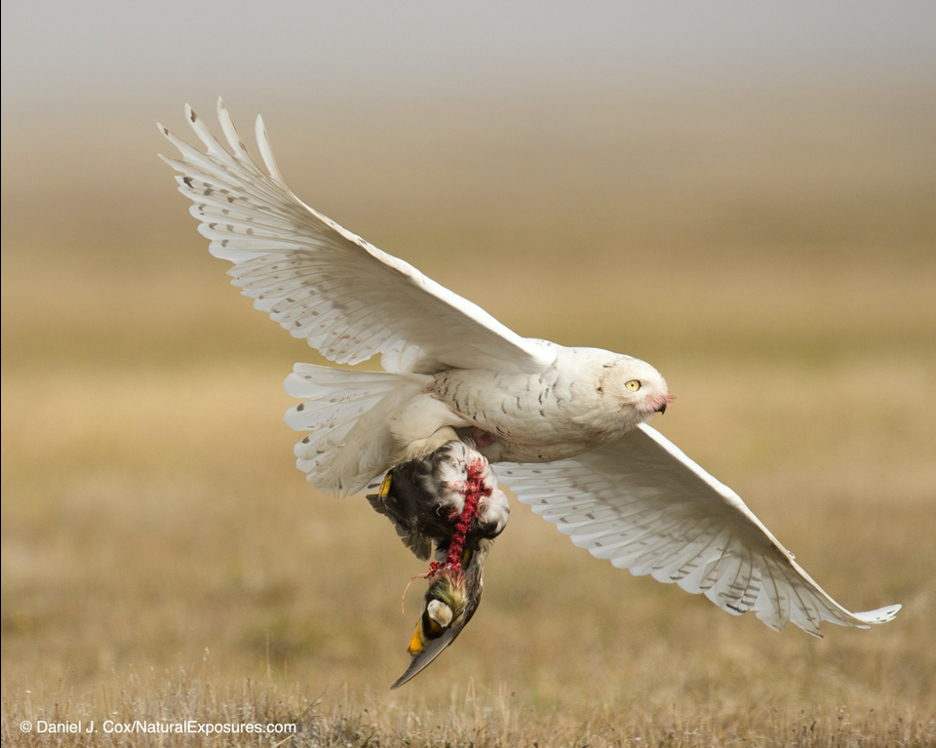
GPS and mapping
One Mylio Photos tool that’s become very helpful to me is the GPS mapping technology. Since much of my work is done with scientists and wildlife biologists, having a GPS location on the photos can be very helpful. Many scientists appreciate this attention to detail. It’s easiest if your cameras have GPS capabilities built-in like the Olympus E-M1X I shoot. (If you don’t, there are apps that can connect GPS data to your camera.) I’ve also been known to shoot an image with my iPhone to get the location that I can then add to my normal camera’s photos using Mylio Photos. GPS location has been a real asset for my science work.
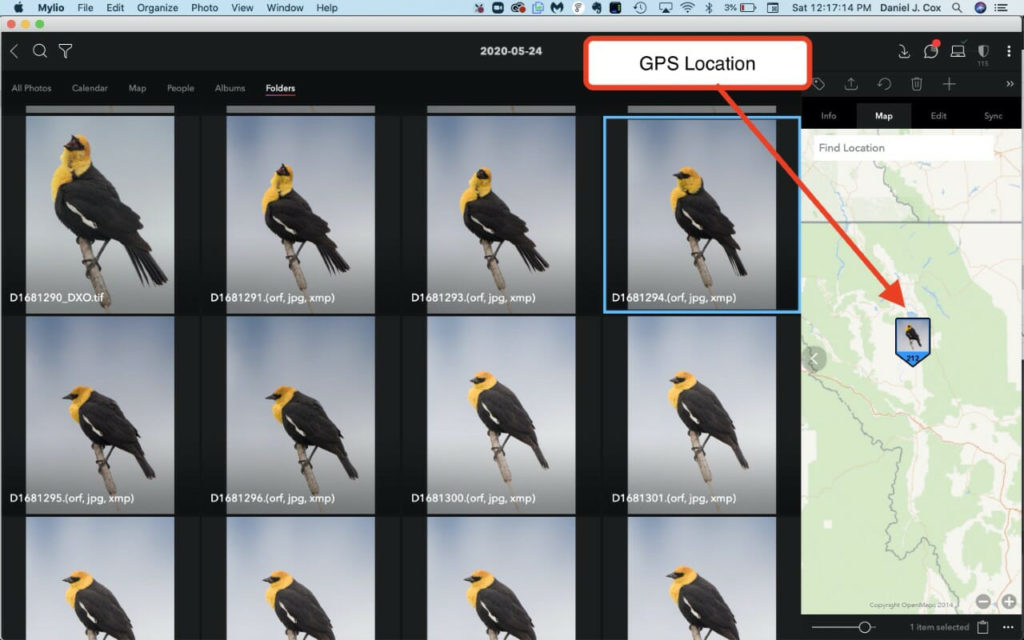
Captioning made easy
Adding who, what, why, and where to your images is an essential tool for any database-driven system, and Mylio Photos does this well. All you do is highlight a group of images, type out the caption, click on one of the images and they all get the same caption. I use an external cut and paste tool called Copy’em Paste. It is a great option for keeping a list of captions in category form that saves everything you might want to use later.

Mylio Photos supports external editors like Photoshop or Lightroom
Like everything in life, nothing’s perfect. Hardcore editing of an image has not been Mylio Photos’ strong suit, though there have been significant recent improvements.
Fundamentally, the software wasn’t built to replace Photoshop or even the editing tools in Lightroom. That said, I still produce 80% of my edits within Mylio Photos, including pictures that go out to Facebook, Instagram, my blog, or other social media. If I have a photo in need of advanced editing tools, I use DXO PhotoLab. Major external editors like Photoshop, Lightroom, Luminar, and ON1 are easily accessed via Mylio Photos. I’ve also used Luminar, Photoshop, Pixelmator, and others.
To take an image from Mylio Photos to an external editor, you simply highlight the image, go to the top menu bar, click on Photo and Open With. You can then select the image editor of choice. If I have numerous pictures needing extra help from DXO PhotoLab, I first add them to a Mylio Album. Then I go to DXO and create New Project. Next I switch back to Mylio Photos, highlight them all and do an Open With DXO. DXO sees them as a group, adds them to the new project, and you’re ready to batch edit.
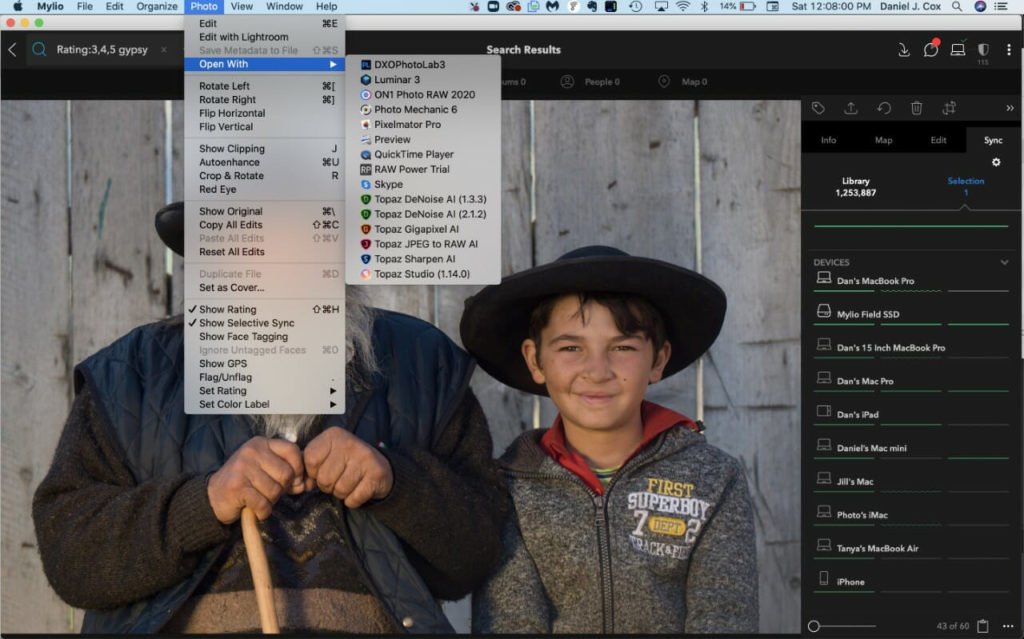
Mylio Photos simplified my workflow
Admittedly the process described above sounds like a bit of a pain, but I can promise you it took me much longer to write it out than it does to actually do it. When all the images are tweaked to perfection, I then have DXO save the image as a TIFF to Original Folder right next to the original. Save to Original Folder is a key component to working with an external editor. It’s one of the main reasons I work with DXO. (Many external editors do not have a Save to Original Folder option. Photoshop and Lightroom do.)
With Save to Original Folder, the image goes right back to the spot the original RAW resides. No more having a separate folder for tweaked images that you have forgotten you’ve fixed. Mylio Photos picks it up from DXO TIFF and adds it to the database. Simple, painless and organized. Without Save to Original Folder you have the added work of finding the saved TIFF, digging around for the original folder and dropping it in. That’s painful!
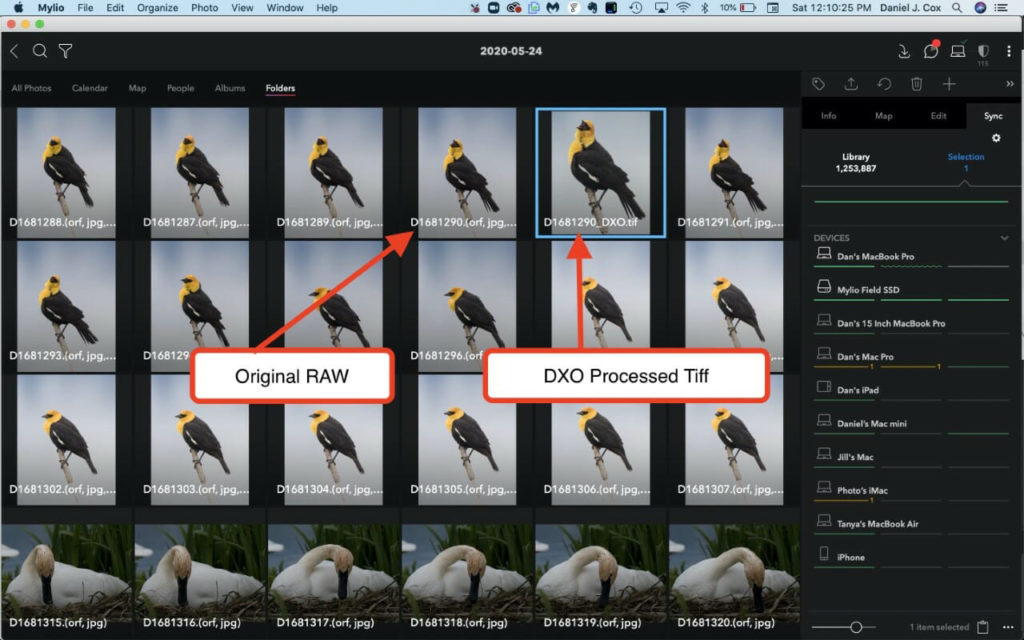
Mylio Photos tools for tracking photos
Keeping track of your pictures also requires Keywords, Star Ratings, and Flagging. Thankfully, most of these things have been standardized. Mylio Photos is no different.
•Star rating. Like Lightroom and Photoshop, Mylio Photos allows star ratings. In my workflow, a one-star rating is destined for the trash can. Two stars is a way I mark all our “people” photos. Three stars and up are images with enough quality to make our online searchable database. Four stars is special, and five stars is absolutely amazing.
•Flags. Flags are a quick and easy way to sort images by picking your favorites and rejecting the ones you don’t want to keep. Mylio Photos offers three flag states: Pick, Reject, and Unflagged.
•Color labels. Another common tool Mylio Photos has adopted is color labels. I don’t use them a great deal, but they’re another way to organize your pictures.

Daniel J. Cox is a celebrated nature photographer who has been documenting the outdoors for over 40 years. His work has been featured, among other places, on covers of National Geographic magazine. Visit Natural Exposures to learn more or connect with Dan.


